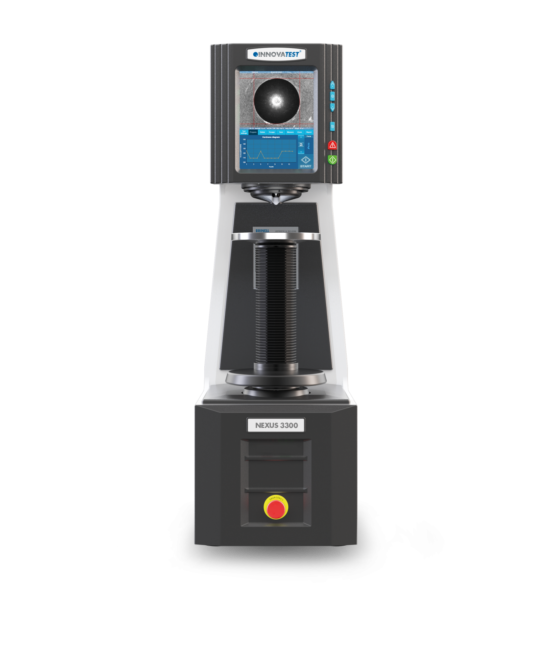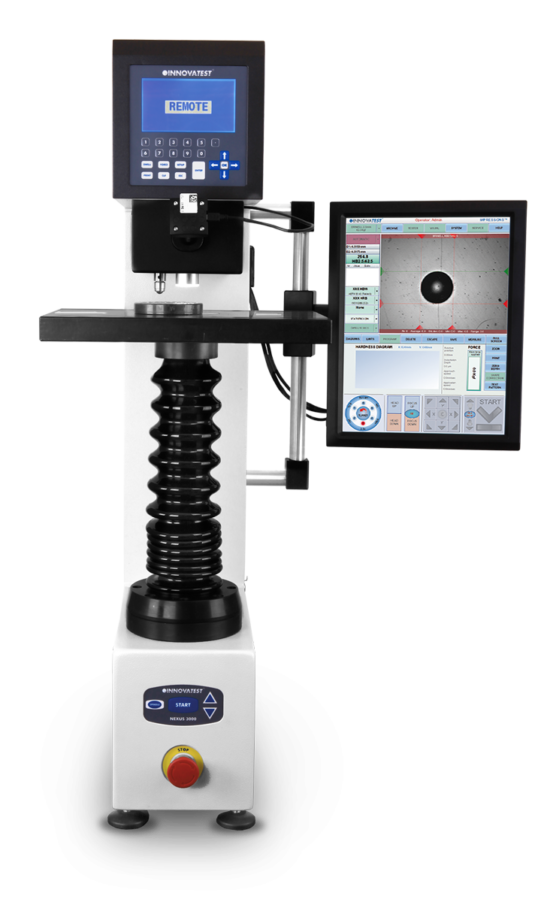
Vickers Hardness Tester
The Vickers hardness tester in an industry-recognized hardness tester. Its principle of testing for hardness using an age-old and widely accepted technology puts it over the top. The Vickers hardness test has been around since 1924, developed by Smith and Sandland at Vickers Ltd. The hardness testers built on this principle are less complicated in their use and result-computation than other hardness testers such as the Brinell hardness tester.
The basic principle of the Vickers hardness tester is using a diamond indenter to make indentations using various specified loads. The indentations are measured and converted to a hardness value. This test’s ease and effectiveness allow for testing on different materials such as metals, ceramics, composites, and applications such as testing foils, testing individual microstructures, or measuring a part’s surface.

Structure and Use of Vickers Tester
A pyramid-shaped diamond with a square base is normally used as an indenter on the Vickers hardness testing scale. The indenter presses onto the test materials with light loads ranging from 10gm to 1kg. However, there are ‘macro’ Vickers’ loads that range from 30kg to 50kg. Normally specimens intended for testing are prepared by mounting on a plastic medium using metallography mounting presses.
Innovatest offers a range of hardness testers in its Falcon lineup. They include the Falcon 400, 450, 500, 600, and 5000. The testers incorporate an advanced force sensor technology that utilizes an electronically controlled loadcell closed-loop system with force feedback. The tech achieves absolute accuracy, reliability, and repeatability on every force used for testing.
